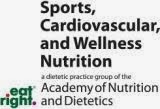It’s always a welcome site to see pumpkins popping up
everywhere as summer weather makes its exit and cool breezes bring fall. This
fall, I have seen pumpkins not only at the grocery stores and craft stores, but
in recipes touting its nutritional properties.
Why Pumpkins?
Remember, when choosing foods to eat, that fruits and
vegetables with vibrant color are packed with antioxidants, vitamins, and
minerals. The bright orange color of a pumpkin is attributed to an antioxidant
called beta-carotene. Beta-carotene is transformed into Vitamin A once it
enters the body. Vitamin A won’t necessarily enhance your sport performance,
but it will help maintain eye health, promote a healthy immune system, and it
is essential for cell growth and development. A well balanced diet full of
nutrient rich foods supports a healthy body and healthy immune system…that in
turn will help your sport performance when intense training may weaken your
defenses.
How can an athlete
include pumpkins in their diet?
Pumpkin Pie Smoothie
Makes approximately 4 servings (1 cup)
Ingredients
1 can (15 oz)
pureed pumpkin (not pumpkin pie filling)
3 cups skim
milk (add more to adjust consistency)
1/2 cup
vanilla Greek yogurt
A dash of
Cinnamon
A pinch of
nutmeg
Sweetener of
choice to taste (try a Stevia blend for lower calories!)
Preparation
Instructions
Scoop the
pureed pumpkin, milk, and Greek yogurt into a blender. Blend on high until
smooth. Add more milk if you would like a thinner consistency. Add cinnamon,
nutmeg, and sweetener to your taste preference and blend once more to mix in
the flavors. Enjoy 30 minutes to 2 hours after a workout for maximum results!
*Adapted and healthified from the
Pioneer Woman
At Home Pumpkin Spice Latte
Makes 1 to 2
servings
Ingredients
2 cups skim
milk
2
tablespoons canned pumpkin
1 to 2
tablespoons sweetener of choice
2
tablespoons vanilla extract
1/2 teaspoon
ground cinnamon
1 cup of
strong brewed coffee or two shots of espresso
In a
saucepan whisk together milk, pumpkin and sweetener and cook on medium heat,
stirring, until steaming. Remove from heat, stir in vanilla and spice. Using a
hand blender or wire whisk, blend the pumpkin mixture until smooth. Stir in
brewed coffee, pour into mugs and enjoy! Excellent after a cool morning run.
Tip: make the pumpkin and milk mixture ahead of time and store for 1-2 days in
your fridge. Heat on low in the microwave before adding coffee.
*Adapted and healthified from
TheKitchn.com
Caroline Sullivan, MS,
RD, CSSD, LD is the SD-USA assistant chair for social media. She is a health
and wellness program coordinator for Dairy MAX and lives in Houston. Her
expertise include sports nutrition, eating disorders, and wellness programming.
For those interested in being a part of SD-USA social media, please contact her
at carolinelsullivan@gmail.com.
Sources of Information
Protein
Summit 2007: Exploring The Impact Of High-Quality Protein On Optimal Health:
American Journal of Clinical Nutrition 2008;87(suppl):1551S–1583S.
University of
Illinois Extension. (2013) Pumpkin
Nutrition. Retrieved October 17, 2013, from http://urbanext.illinois.edu/pumpkins/nutrition.cfm.
Natural
Medicines Comprehensive Database. (2012) Vitamin
A. Retrieved October 17, 2013, from http://naturaldatabase.therapeuticresearch.com/home.aspx?cs=&s=ND.



